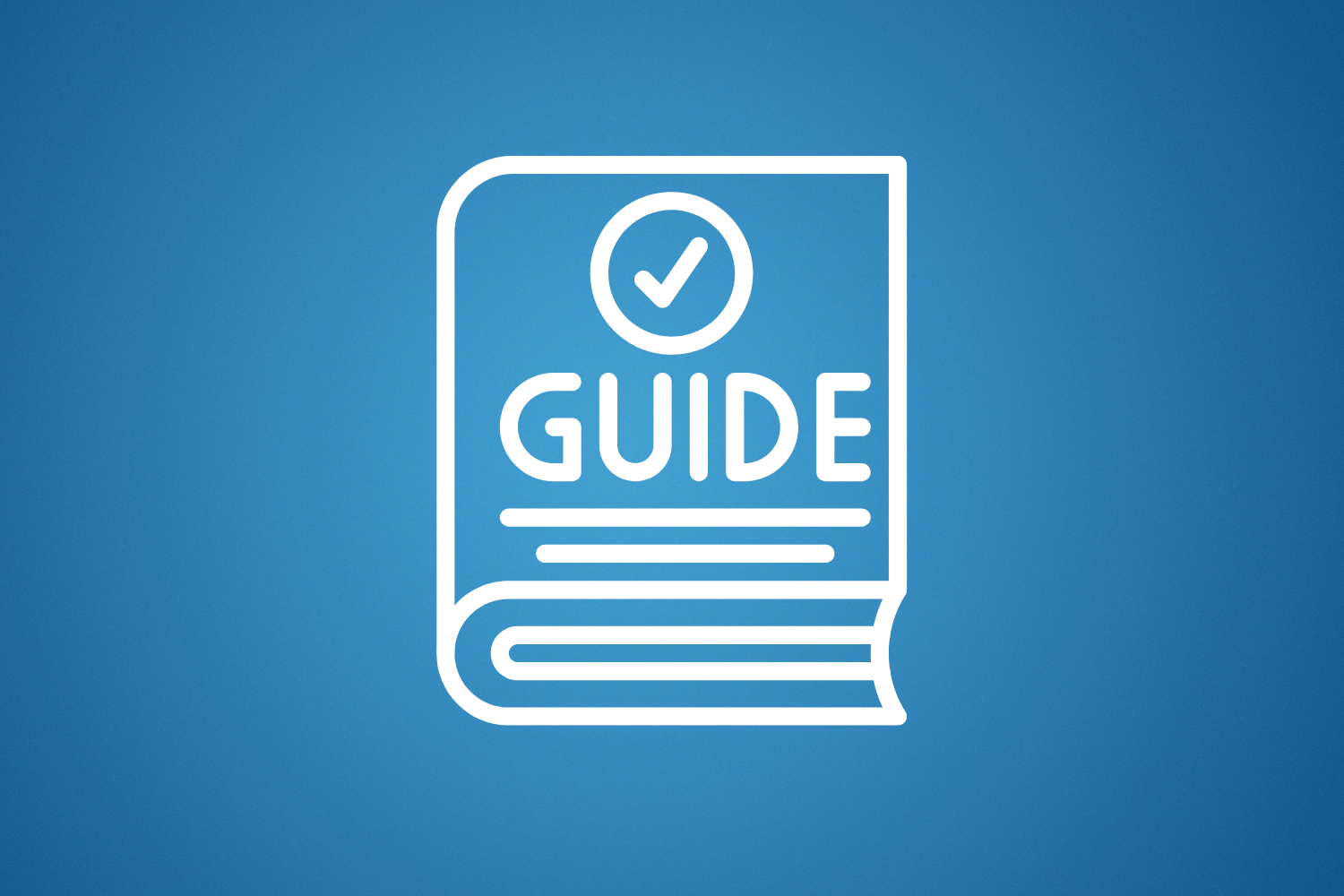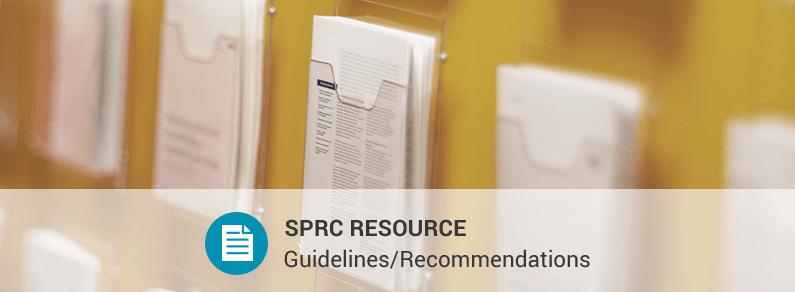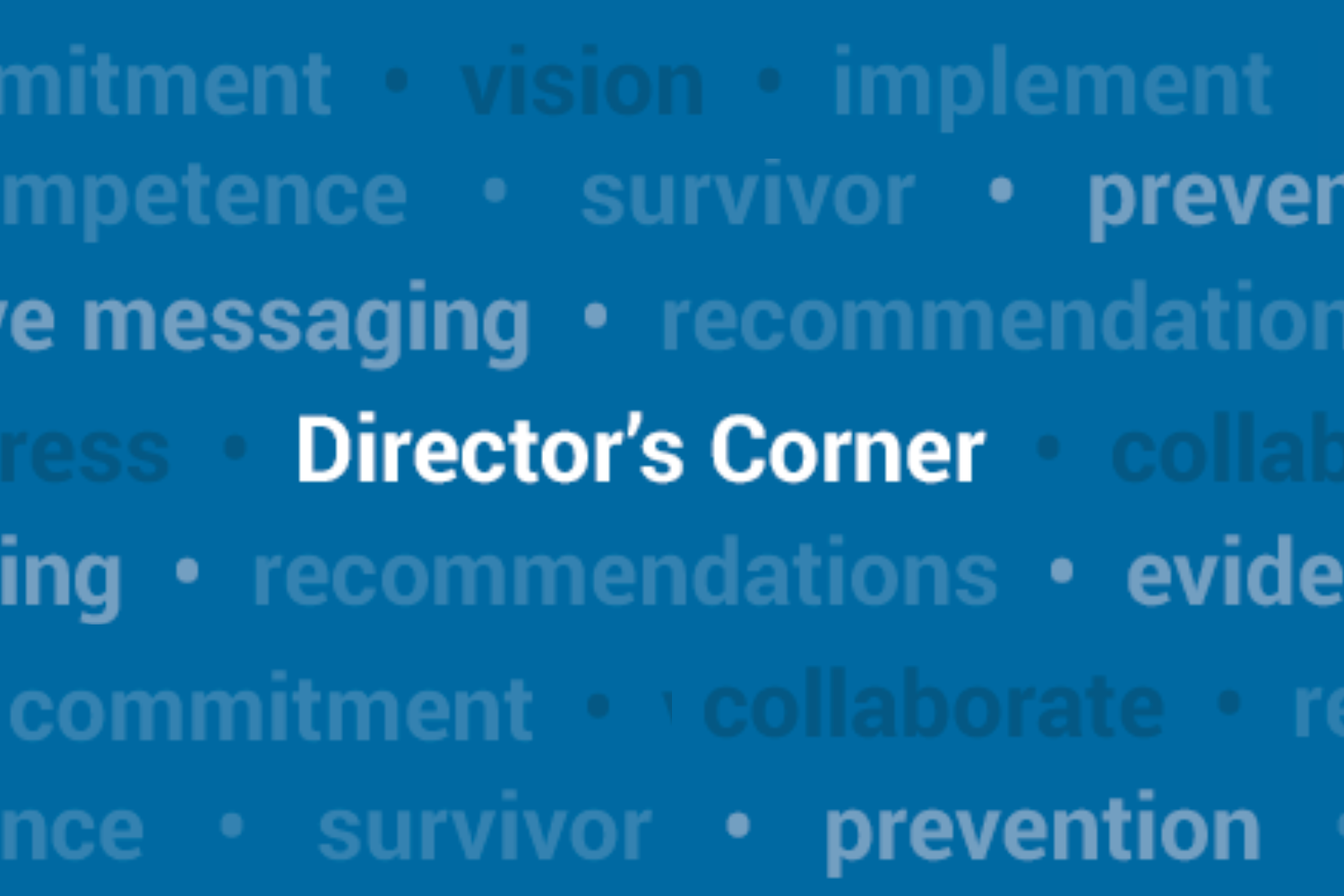Search Results for: school resources
-
A Model School Policy on Suicide Prevention: Model Language, Commentary and Resources

This document was developed by ensuring that local policies are in line with the latest research in the field of suicide prevention and identifying best practices for a national framework. The model is comprehensive, with modular language that may be adapted to draft policies based on the unique needs of individual districts. The language and […] See more...
-
Suicide Risk Assessment Resource Guide – Additional Resources
SPRC’s annual State and Territorial Suicide Prevention Needs Assessment (SNA) examines the suicide prevention infrastructure and capacity of U.S. states and territories. See more...
-
Schools
-
Upstream Suicide Prevention in Connecticut Elementary Schools

In this five-minute story, Heather Spada from United Way of Connecticut describes her state’s effort to create and implement an upstream suicide prevention curriculum in elementary schools. Featuring Gizmo the therapy dog, Gizmo’s Pawesome Guide to Mental Health is helping elementary school staff effectively teach children about mental health, life skills development, and social connectedness. This effort […] See more...
-
Preventing Suicide: The Role of High School Mental Health Providers

This sheet provides information and resources on suicide prevention for high school mental health providers. See more...
-
Preventing Suicide: The Role of High School Teachers

This sheet provides information and resources on suicide prevention for high school teachers. See more...
-
Coping after suicide loss: Tips for grieving adults, children and schools
This resource provides guidance on how to cope with one’s own emotions after the suicide death of a friend or family member, how to talk to children and teens about a suicide and how schools should safely handle communicating about a suicide death in the school community. Help resources are also provided. See more...
-
Recommendations for School-Based Suicide Prevention Screening

These recommendations for school-based screening are based on a literature review and the experience of Garrett Lee Smith (GLS) grantees. See more...
-
How to Get Started in Community Suicide Prevention
Suicide prevention is most effective when rooted in the communities where people live, work, learn, play, and worship. Prevention efforts that are informed by the unique needs of each community can play a vital role in reducing suicide risk. If you are involved in a community organization, we encourage you to continue your important work. […] See more...
-
State Infrastructure Success Stories

Arizona Build: Strengthen the crisis system and policies, including mobile response and hotlines California Authorize: Designate a lead division or organization Lead: Build staff capacity to effectively communicate across audiences Guide: Identify and allocate resources needed to guide state, county, and local efforts Colorado Partner: Form a statewide coalition with broad public and private sector […] See more...
-
Be the Change: How to Support Suicide Prevention Efforts This September

As we approach Suicide Prevention Month, share the information below with your communities to help them know what to expect—and more importantly, how to get involved. September is Suicide Prevention Month! In the U.S., World Suicide Prevention Day (September 10) is surrounded by National Suicide Prevention Week (September 10-16). All month, the internet will be […] See more...
-
Meeting Rural Men Where They Are

June is Men’s Health Month, a time when men are encouraged to check in on their own mental health and watch out for their friends’. That’s good stuff, and if more men did just those two things, we would all be better for it. But is it enough? Suicide is associated with a complex combination […] See more...
-
13 Reasons Why
SPRC has received many questions about the Netflix series 13 Reasons Why (13RW). We list the most common questions from parents, schools, media, and community leaders below, with resources to help you talk about the series and suicide risk and prevention. If you are thinking of hurting yourself, or if you are concerned that someone you […] See more...
-
The Patient Safety Screener: A Brief Tool to Detect Suicide Risk
This seven-minute video describes the first part of the Patient Safety Screener, the Patient Safety Screener (PSS-3), a tool for identifying patients in the acute care setting who may be at risk of suicide. The PSS-3 can be administered to all patients who come to the acute care setting, not just those presenting with psychiatric […] See more...
-
Micro-Learning

Micro-learning provides short, targeted learning experiences. Each micro-learning resource provides relevant, practical information to help you build skills and improve outcomes. SPRC micro-learning resources can be viewed at any time on any device, so they’re always at your fingertips. A Lived Experience Story About What Makes a DifferenceWatch this brief video to learn from a […] See more...
-
Core Competency: Communication and Marketing
Communication comes into play at every step of your grant effort. To involve stakeholders and get community buy-in, you need to communicate your program goals and how they relate to local priorities. Many grantees develop social marketing or awareness campaigns during their grant to promote help seeking among youth or to obtain support from friends […] See more...
-
Core Competency: Partnerships and Collaboration
It’s impossible to develop a successful suicide prevention strategy without help and input from others. Bringing together a range of partners gives you the opportunity to interact with folks already involved in suicide prevention, as well as those in related fields, who may offer key resources and perspectives that are critical to a comprehensive response. […] See more...
-
Guide
State suicide prevention programs play a critical role in providing consultation and training to local health departments and many others at the state and local levels. Recommendations Related Tool Guide Recommendation: Ensure the ability to plan, provide, and evaluate guidance for state, county, and local efforts The lead organization or a designee should be able […] See more...
-
Build
A key function of state suicide prevention programs is to oversee the implementation and evaluation of suicide prevention programming. To maximize resources available for program implementation, state-level efforts must include a combination of strategies that are supported by the best available evidence, are most appropriate for their context and populations, and are best able to […] See more...
-
Partner
As described in the National Strategy for Suicide Prevention, suicide prevention requires a multifaceted approach that focuses on risk and protective factors at individual, family, community, and societal levels. As a result, prevention efforts are more likely to succeed when they involve multiple partners from the public and private sectors to increase the capacity and […] See more...
-
About the Recommendations
Working Definition A state’s concrete, practical foundation or framework that supports suicide prevention-related systems, organizations, and efforts, including the fundamental parts and organization of parts that are necessary for planning, implementation, evaluation, and sustainability. Since its inception in 2002, SPRC has worked with state suicide prevention leaders to help them build a strong prevention infrastructure […] See more...
-
Promote Social Connectedness and Support

Social support and connection are key protective factors against suicide. Positive and supportive social relationships and community connections can help buffer the effects of risk factors in people’s lives. Programs and practices that promote social connectedness and support are one element of a comprehensive approach to suicide prevention. What Is Connectedness? In 2011, the Centers […] See more...
-
Reduce Access to Means of Suicide

Reducing access to lethal means of self-harm for a person at risk of suicide is an important part of a comprehensive approach to suicide prevention. Firearms are the most lethal among suicide methods. Also of concern are medications that are lethal at high doses. Why It’s Important Here are some of the reasons why reducing […] See more...
-
Provide for Immediate and Long-Term Postvention

When a person dies by suicide, many others are deeply affected: What is Postvention? Postvention is a term often used in the suicide prevention field. The definition below is from the U.S. national guidelines developed by the Survivors of Suicide Loss Task Force.1 [Postvention is] an organized response in the aftermath of a suicide to […] See more...
-
Identify and Assist Persons at Risk

Identifying persons who may be at risk for suicide is a key part of a comprehensive approach to suicide prevention. Family members, friends, teachers, coaches, coworkers, and others can play an important role in recognizing when someone is at risk or in crisis and then connecting that person with the most appropriate sources of care. […] See more...
-
Step 1: Describe the Problem and Its Context

Step 1 of the strategic planning process is to describe the problem and its context. That means being able to answer questions, such as: With a solid understanding of suicide in your state or community, you will be able to determine targeted and evidence-based responses. This information can also help you make the case to stakeholders that prevention efforts […] See more...
-
Topics and Terms

This page offers definitions of terms commonly used in suicide prevention. Many of these terms are also used in other public health and behavioral health contexts, where they may be defined somewhat differently. Assessment A comprehensive evaluation, usually performed by a clinician, to confirm suspected suicide risk in a patient, estimate the immediate danger, and […] See more...
-
Recover Together

At SPRC, we believe in the power of words to help effect positive change, in people and the world around us. But after recent incidents of mass violence, we’ve struggled with the limitations of language to convey what many of us have at times felt—grief, anger, even despair—and to communicate a helpful vision for a […] See more...
-
Child Abuse Prevention Is Suicide Prevention

As pandemic disruptions stretch into a third year, creating supportive environments for children and families can help reduce the risk of child maltreatment—and prevent suicide. Throughout COVID-19, risk factors for child abuse and neglect are up, which may increase the short- and long-term risk of suicide. Providing families with the supports they need now can […] See more...
-
A New Partnership for Suicide Prevention

This Suicide Prevention Month, we have some good news to celebrate: the Suicide Prevention Resource Center (SPRC) has been funded for another five years! We are delighted to announce a new partnership between the University of Oklahoma Health Sciences Center (OUHSC), the University of Oklahoma Outreach Southwest Prevention Center (SWPC), and Education Development Center (EDC) […] See more...
-
Common Ground: Reducing Gun Access – SPARK Talk

Limiting access to guns can help save the lives of people who are at risk of suicide. And who better to take on this suicide prevention effort than the gun community, asserts Cathy Barber of Harvard’s Means Matter Campaign. Ralph Demicco, a former gun shop owner agrees, “I’ve experienced an awful lot of incidents where […] See more...
-
Surveillance success stories – White Mountain Apache Tribe (WMAT)

Through tribally-mandated data collection, the WMAT was able to identify those under 25 as most at risk and plan targeted interventions. See more...
-
Using Data to Prevent Suicide – SPARK Talk

Who experiences the highest rates of suicide in your community or state? What age groups, sex, and ethnicities, and where do they live? Without data, how would you know for sure? Data tells us the “who, what, when and where” of a problem such as suicide, says Dr. Alex Crosby, a medical epidemiologist with the […] See more...

